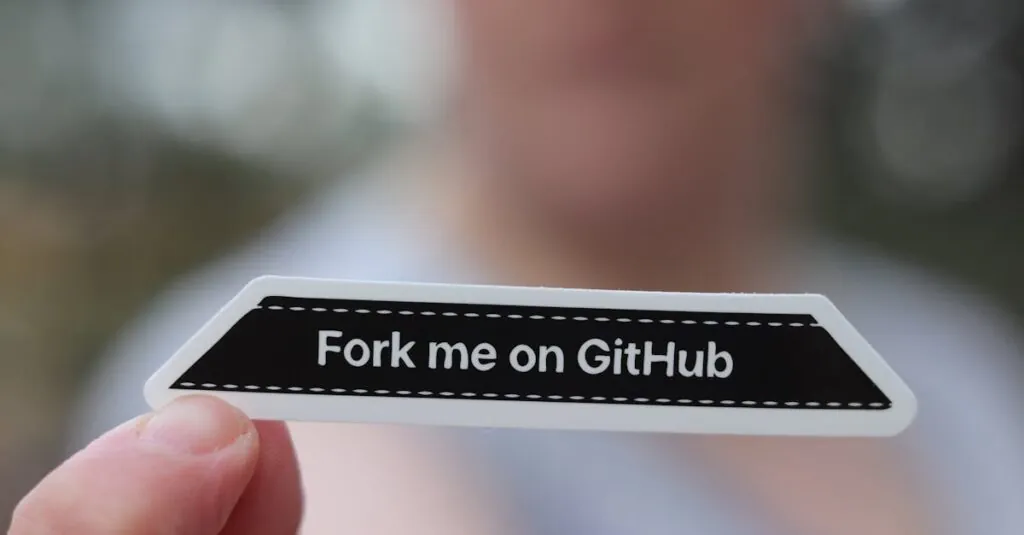Table of Contents
ToggleIn the world of coding, committing code is like sending your child off to school for the first time—it’s both nerve-wracking and exhilarating. With every commit, developers take a leap of faith, trusting that their code won’t end up in the digital equivalent of a messy room. So how do you ensure your code gets the best start in life?
Understanding Code Commit
Committing code represents a crucial step in the software development process, marking advancements in a project. Developers experience a blend of anxiety and excitement with each commit, ensuring their code is ready for the next stage.
Definition of Code Commit
A code commit refers to saving changes made to a software project in a version control system. This action creates a snapshot of the code at that moment in time, preserving the current state. Each commit includes a unique identifier and can contain messages that describe the changes made. Regular commits promote clarity and traceability, making it easier to track project evolution.
Importance of Code Commit
Committing code plays a vital role in collaboration within development teams. It facilitates teamwork by allowing multiple developers to work concurrently on various aspects of a project. Each commit enables easy rollback to previous states, safeguarding against potential errors introduced in later versions. Documentation accompanying commits improves understanding and management of changes for team members, ensuring any future adjustments remain manageable.
Preparing for a Code Commit
Preparing for a code commit involves ensuring that the code is ready for integration into the main project. Attention to setup and best practices helps streamline the process.
Setting Up Your Development Environment
Establishing a proper development environment is essential. Developers should use a consistent setup across all machines to avoid discrepancies. Utilizing version control tools like Git can simplify tracking changes. Ensuring that all dependencies are installed and configurations are correct aids in smooth execution. Testing the code against various scenarios within this environment prevents issues later on.
Best Practices for Writing Code
Writing code with clarity promotes better understanding. Developers should keep functions lean and focused, ideally under 20 lines each. Naming conventions must be consistent to enhance readability. Commenting on complex sections provides context for future collaborators. Reviewing code regularly through peer reviews catches errors early and maintains quality. Keeping commits small and frequent contributes to clearer project histories, making future modifications easier.
The Code Commit Process
Code commits represent key moments in the software development lifecycle. They capture progress and changes in a project, ensuring that the development team stays aligned.
Steps to Commit Code
- Check the Work: Review the changes thoroughly before committing. This minimizes errors and ensures code quality.
- Stage Changes: Use the version control system to stage specific files for committing. This step clarifies which modifications to include.
- Write a Descriptive Message: Provide a clear, concise message that explains the purpose of the commit. This aids in understanding the change later.
- Execute the Commit Command: Use the appropriate command to execute the commit. This action finalizes the changes in the repository.
- Push Changes: After committing, push the changes to the remote repository. This step shares the updates with the rest of the team.
Common Tools and Platforms for Code Commit
Several tools enhance the code commit process. Git stands out as a prominent version control system, popular for its robust features. Developers frequently use GitHub and GitLab to host repositories, allowing for easy collaboration and tracking of changes. Bitbucket is another option, often integrated with Jira for project management. These platforms facilitate pull requests, enabling code reviews and collaborative discussions before merging changes. Working within these environments supports a smooth workflow for teams of all sizes.
Troubleshooting Common Issues
Developers often encounter challenges during the code commit process. Identifying and resolving these issues promptly is crucial for maintaining project momentum.
Resolving Merge Conflicts
Merge conflicts arise when two or more developers modify the same lines of code. To handle these conflicts, understanding the situation is vital. Start by reviewing the conflicting changes in the version control system. Identifying the specific lines of code that triggered the conflict aids in resolution. Utilize the built-in tools in systems like Git, which provide clarity on changes. Communicating with team members can further assist in deciding which version of the code to retain. Once resolved, testing the code ensures stability before committing the changes.
Tips for Successful Commits
Successful commits lead to better project outcomes. First, always write clear and descriptive commit messages that explain the changes. Consistency in coding style contributes to readability and maintainability. Testing code prior to committing can prevent introducing errors into the main branch. Involving teammates in code reviews provides additional perspectives, catching potential issues before they escalate. Keeping commits small helps isolate changes, making it easier to identify problems later. Frequent commits create a more detailed project history, enhancing collaboration and simplifying future modifications.
Conclusion
Committing code is more than just a technical task; it’s a pivotal moment in a developer’s journey. By embracing best practices and preparing thoroughly, developers can ensure their contributions are meaningful and effective. Each commit serves as a building block in a project’s evolution, fostering collaboration and enhancing clarity.
With the right tools and strategies in place, developers can navigate challenges with confidence. Prioritizing clear communication and documentation not only streamlines the process but also strengthens team dynamics. As developers continue to refine their skills, each successful commit will pave the way for future innovations and improvements.




